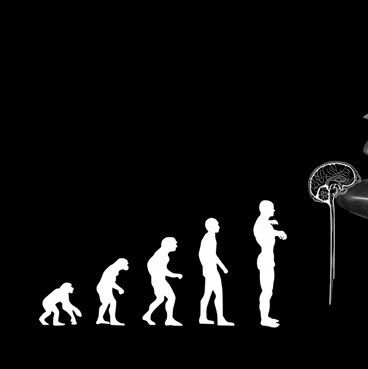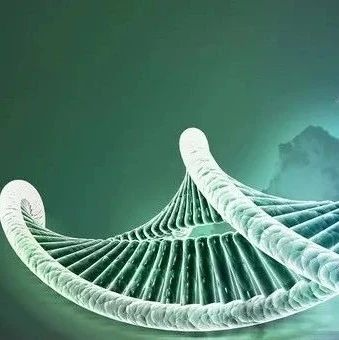摘要:匹兹堡大学和威斯康星大学麦迪逊分校的研究人员发现,随着时间的推移,微小的基因突变的积累,可以建立起一种进化”快车道“,从而导致新的特征快速发展。 该研究发表于《 美国国家科学院院刊 》( PNAS ),文章指出,DNA中的某些片段,如增强子(决定基因转录的时间、地点和表达量)中微小的变化可激活休眠的遗传缺陷。 这些变化可以”唤醒“一些特定基因,让这些基因开始表现出低水平的活性,或者我们可以把这种情况称为“泄漏”。仅仅几个突变就可以使一个旧的基因表现出完全不同的新特性和新功能。
文章的作者之一Mark Rebeiz [Ra-BAYS],是皮特艺术与科学学院的生物学教授,他和他的同事对一种果蝇中的某一个未知的基因如何在特定视觉神经元中定位自身做了追踪。 他们发现,该果蝇物种祖先的转录增强子微小的变化可以使得这种基因在这些神经元中首次“扎根”,此后的突变将会成为果蝇脑细胞永久性的特征。
Rebeiz和他的合作者在文章中首次解释了到底是什么让这些基因从一开始就“误入歧途”,他们将异常的DNA确定为罪魁祸首。
Rebeiz说:“我们的工作表明,即使是很微小的转录增强子的突变,也可以导致基因的部分活性缺失,由此可以发展出一些新的特性。”
生物探索推荐英文原文:
Leaky genes put evolution on the fast track, Pitt and UW-Madison researchers find
Small genetic mutations that add up over time could create an evolutionary express lane that leads to the rapid development of new traits, researchers from the University of Pittsburgh and the University of Wisconsin at Madison have found. The team reports in theProceedings of the National Academy of Sciences (PNAS) that slight changes in segments of DNA known as transcriptional enhancers—which determine the when, where, and how much in gene production—can activate dormant genetic imperfections. These alterations awaken specific genes to low-level activity, or "leakiness," in developing tissue different from the genes' typical location. Just a few subsequent mutations build on that stirring to result in a new function for an old gene—and possibly a novel trait.

Pictured:The original enhancer DNA (left) mutates to contain an additional protein-binding site (center), which causes low-level gene activity in a new location, illustrated by the light blue spine. Subsequent mutations (right) build on that activity to produce a novel characteristic, or the dark blue spine.
Coauthor Mark Rebeiz [Ra-BAYS], a professor of biological sciences in Pitt's School of Arts and Sciences, and his colleagues traced how a certain unwitting gene found itself in the unique optical neurons of a species of fruit fly. They found that tiny alterations in the transcriptional enhancers of the species' ancestor caused the gene to take root in these neurons for the first time. A couple of mutations later and the gene became a permanent fixture in the fly's brain cells. Rebeiz worked with coauthors Sean Carroll, professor of molecular biology and genetics at the UW-Madison; Nick Jikomes, an undergraduate researcher in Carroll's laboratory; and Victoria Kassner, a research associate in Carroll's lab.

This is Mark Rebeiz of University of Pittsburgh.
The Pitt-UW Madison work expands on research during the past 30 years demonstrating that new genes made from scratch are rare in animals, Rebeiz said. Instead, the diversity of living things is thought to stem from existing genes showing up in new locations. In a famous example of the lack of originality in animal genes, researchers at the University of Basel in Switzerland reported in Science in 1995 that a gene known as PAX6, a "master control" gene for the formation of eyes and other features in flies, mice, and humans, could cause the growth of additional eyes on the legs and antennae of fruit flies.
With their report in PNAS, Rebeiz and his coauthors offer the first explanation of what makes these genes go astray in the first place—and they identified the deviant DNA as the culprit.
The researchers found that the gene Neprilysin-1 present in the optical neurons of the fruit fly species Drosophilia santomea emerged in that location about 400,000 years ago—a blip in evolutionary terms—in the last common ancestor the fly shared with its relative D. yakuba. The mutation began with a transcriptional enhancer for the gene, which caused Neprilysin-1 to show up in different neurons than usual.
From there, Rebeiz said, the development of D. santomea's distinguishing neurons plays out with the clarity of a film as four mutations in subsequent generations intensify the errant enhancer's impact until Neprilysin-1's presence in optical neurons become an exclusive feature of D. santomea. On the other hand, ensuing genetic alterations in D. yakuba actually extinguished this new expression and restored that fly's Neprilysin-1 to its original location.
"It has been long appreciated that nature doesn't make anything from scratch, but the mystery has remained of how genes that have been performing the same job for hundreds of millions of years are suddenly expressed in new places," Rebeiz said. "Our work shows that even slight mutations in a transcriptional enhancer can cause leaky gene activity, which can initiate a short route to the development of new traits."







